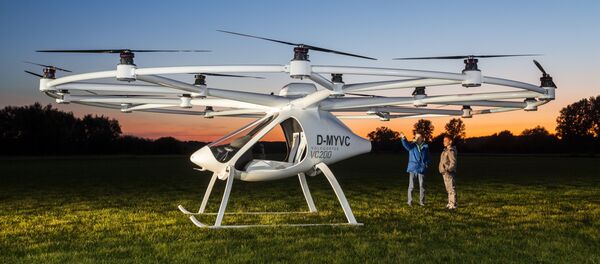In 2016, Airbus founded Urban Air Mobility, to develop commercially-viable flying cars. Rather than marketing to consumers, Airbus hopes to develop an aerial equivalent to Uber or Lyft: people order a flying car by using their mobile device.
The flying car, codenamed Vahana (after the Sanskrit word meaning "that which carries"), has eight propellers and a distinctly sci-fi look. It is one of two main concepts Airbus is exploring, the other a helicopter-esque vehicle that would act as a literal air bus for multiple passengers.
Both concepts are Vertical Take-Off and Landing (VTOL) aircraft, meaning they can lift off and land from a standing position, without the use of a runway. VTOL jets such as Boeing's V-22 Osprey and Lockheed Martin's F-35B Lightning II see military use, but the only civilian aircraft to use VTOL technology are helicopters.
Airbus CEO Tom Enders sees this as a highly worthwhile endeavor. "With flying, you don't need to pour billions into concrete bridges and roads," he said at the Digital Life Design Conference in Munich. "We are in an experimentation phase, we take this development very seriously."
Enders also said that he hoped to have a functional single-person transport by year's end. He has claimed that Airbus wishes to be a company of the future, focusing on developing transportation technologies such as autonomous vehicles.
"One hundred years ago, urban transport went underground. Now we have the technological wherewithal to go above ground," he said. "If we ignore these developments, we will be pushed out of important segments of the business."
Enders predicted that "in fifteen years, we can do 90-100 passengers with an electric or hybrid aircraft."
Airbus has assured the public that their vehicles will be pollution-free and environmentally-friendly. However, they are not the only ones working on flying taxis: Uber has announced their intention to add aerial transportation to their services within the decade, while the Chinese company EHang has developed a working (if unviable) prototype of an autonomous air taxi.
The world population is flocking to cities at unprecedented rates, from roughly 30 percent in 1950 to 54 percent in 2015, with a projected 66 percent of humanity living in cities by 2050, according to the United Nations. With population growth comes urban sprawl, longer commutes, and heavier traffic, all huge wastes of resources.




